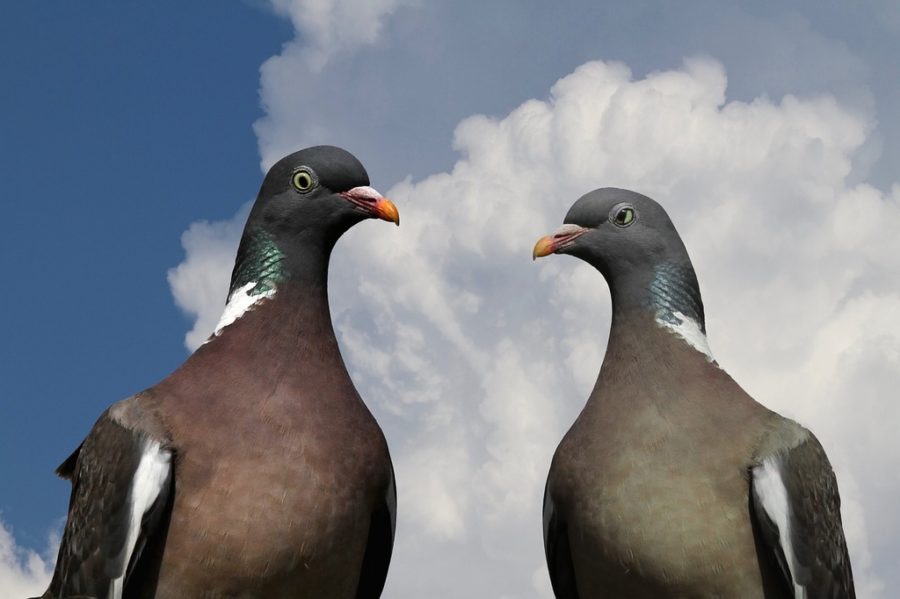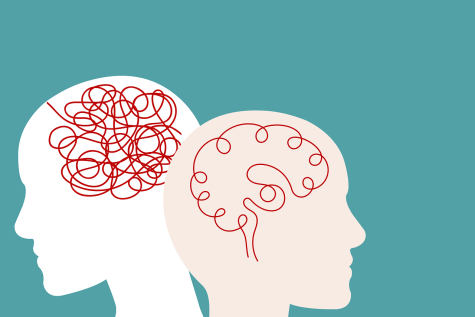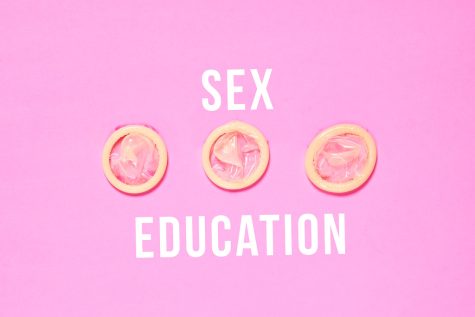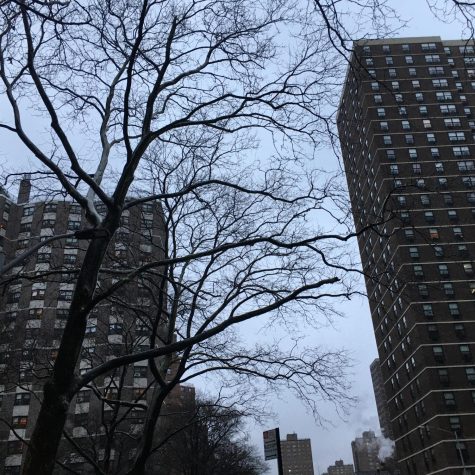Rats of the sky
November 7, 2018
There is a white bird with buff plumes called the Cattle Egret; it lives on coastal islands and spends a large amount of its time on top of and around cows. When various insects fly around the cows, the Cattle Egret eats them. This relationship is great for the bird, as it gets to eat and survive, while the cow is simply unaffected. Cattle may be annoyed by them at times, but overall this relationship will continue to exist, as it is beneficial to the egret.
In New York City, there are roughly four million pigeons, each mimicking this type of relationship every day. With the pigeons being the egret, and all eight million New Yorkers being the cows. The people of New York are split up into two categories: those who are actively aware of this relationship and embrace it, and those who are simply existing and not bothering to prevent it. Some indulge in this relationship, and bring bags of bread and seeds to parks, creating massive crowds of pigeons all swarming and fighting for food. The other group makes up the rest of New York, accidentally dropping or leaving their food places, which then becomes a pigeon’s next meal. This is a perfect example of commensalism, a relationship in which one organism benefits, and the other is simply unaffected. Whether New Yorkers like it or not, this relationship is a part of living here.
Pigeons, first brought to New York City in the 1600s from Europe to be eaten, have grown an infamous reputation among locals. Typically overlooked and disliked for being dirty and a nuisance, many have deemed them, “rats with wings.” A phrase coined by New York City parks commissioner Thomas in 1996. Although frequently scattered throughout the city’s streets, they maintain a low presence, which is likely why they have been allowed and able to remain here. Their presence is perceived as just not enough of a nuisance to do something about, but enough to make them unpopular.
However, it wasn’t always this way and the perception of them as well as their role in a given ecosystem varies greatly depending on region and culture. Their surroundings and treatment makes all pigeon’s lives drastically different, each bird is just trying to survive.
Residents of New York City pass anywhere from tens to hundreds of pigeons every single day. Anywhere in the city where people exist, there will be pigeons scavenging and living off of the people there. Not often do New Yorkers wonder, how did they get here? And why are they here? Well, pigeons are in fact not native to New York City. They originated in Europe where they originally resided in hillsides, feeding off of grains, seeds and berries.
They were first brought by settlers in order to be bred and eaten. However, they slowly adapted over hundreds of years, now residing in mainly urban environments. The hillsides they originated in have become the sides of huge skyscrapers and city parks, and the berries they once foraged for have become crumbs and scraps they scavenge. Their shift in environment meant they were forced to adapt in order to survive, and so they did. It’s hard to imagine a time when pigeons were anything but scavengers, but for most of history they were self-sufficient, and in many regions they still are.
The status of pigeons within the animal kingdom is notoriously low. Students at the NYC iSchool often described pigeons as “annoying” “gross” and a “nuisance.”
Although not many people would say they like pigeons, it’s undeniable that they are a part of New York City culture. Ten different members of the iSchool community agreed. When asked why this is Lucy Gunderson, a sophomore said, “Because the New York identity is a little grimy, and so are they.”
Although we might be alongside them, there is far from a sense of togetherness. Daniel Alexander Goyette, a senior at iSchool, says, “I feel like pigeons can be amusing, but generally I don’t like them. They are a nuisance, they flock and they are dirty.” He is not alone in this opinion. The vast majority of students interviewed agreed that they get a bad reputation, but few agreed it was entirely justified.
The negative perceptions of pigeons is relatively new. In fact, they have played a surprisingly large historical role for an animal so overlooked in modern day.
In World War I, over one hundred thousand messenger pigeons were used. This was at a time when the post office was not yet established, and sending letters through telephone and telegraph came with a high risk of interception, and so pigeons became a great means of communication. 95% of messages sent by pigeon during world war one were received.
In fact, one specific homing pigeon was so helpful that it was awarded the Croix de Guerre Medal with a palm Oak Leaf Cluster in thanks for her service. This pigeons name was Cher Ami, meaning dear friend in French. Before World War I, a group known as the Pigeon fanciers of Britain donated Cher Ami to the U.S army signal corps.
Once there, Americans trained Cher Ami even more and learned to use her unique homing ability to their advantage. On October 3rd, 1918, roughly 200 men were trapped on the side of a hill behind enemy lines without food. They were surrounded by German soldiers, as well as being shot at from allies who didn’t know who they were. They were unable to send runners as they would be shot, and so they had to attempt to use pigeons to contact their base.
Two different pigeons were sent with messages to send help, but both were shot down and intercepted. After already two failed attempts, Cher Ami was sent with a canister on her left leg, holding one small note written on onion paper. It read, “We are along the road parallel to 276.4. Our own artillery is dropping a barrage directly on us. For heaven’s sake stop it.”
While flying out of the hillside, Cher Ami was shot at by German soldiers, who refused to let a message get back. Cher Ami was hit and slowly fell down through the air, however, she was able to get back up and continue flight, even after being shot. After flying 25 miles, she arrived at the U.S base, safely delivering the message and saving the lives of 194 people.
Once back, she was examined and they found she has been shot through the breast, has been blinded and had one leg almost falling off, but was able to survive after they created her a small wooden leg. This pigeon was then brought back to America, and eventually died in New Jersey.
Cher Ami is regarded as a war hero having saved the lives of an encircled battalion. Many would be surprised that this is the same bird as those on the streets of New York. The pigeon, now thought of as dirty and annoying, was briefly renowned as brave and heroic.
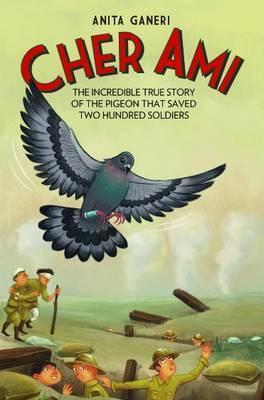
When people think of smart animals, they think of chimps and dogs. The observations made of animals is usually how one determines their intelligence. Everyday, millions of Americans believe that dogs as smart when they see their dogs recognize their faces and fetch things thrown. Jane Goodall observe chimps creating tools much like humans do, and confirmed her beliefs of them as intelligent animals. However, intelligence can’t always be determined by what is seen.
Current Biology published a study that was intended to understand if pigeons had any sense of abstract concepts. Pigeons were put in a room in front of a screen, and on the screen horizontal lines of varying length were shown. Scientists had them peck at lines that were shorter, and then they moved the lines around and showed them for varying lengths of time. The data found that the pigeons associated the longer lines with a longer duration of time. This may not seem like a huge deal, but this shows that they perceive space and time in the same part of their brain, and are able understand the relationship between the two.
Edward Wasserman, Stuit Professor of Experimental Psychology in the Department of Psychological and Brain Sciences at the UI, and a head of the study writes, “Those avian nervous systems are capable of far greater achievements than the pejorative term ‘bird brain’ would suggest.” Being able to understand abstract concepts is very difficult, and most animals that can are thought of as far more developed, and perceived by humans to be “smart” animals. When the cognitive process of an animal most New Yorkers neglect, mirrors one of humans and high level primates, maybe it’s time to rethink the negative perception of that animal.
Although in modern day New York City pigeons are commonly seen as a nuisance, this is not the case everywhere. In China, the perception of pigeons is almost the opposite of what it is in the city. In China, believe it or not, pigeons are seen as rare and are even associated with the upper class. A perception that vastly differs from how native New Yorkers see them.
One of the many uses of pigeons in China is for food. Pigeons have been eaten in China for more than 2,000 years. According to one 1987 New York Times article, pigeons used to be a desirable delicacy. Unlike chickens, not a lot of people had them which meant they were special. People would eat them during special family occasions and holidays. Eileen Yin-Fei Lo, a journalist who grew up in China, writes, “When I was a child in Sun Tak, outside of Canton, my brother raised pigeons for our family table and we were envied by many of our neighbors.” Although they were still eaten, they were also seen as a respectable novelty.
Another use of pigeons in China, that has grown increasingly popular in recent years, is pigeon racing. Racing homing pigeons can be traced back to the 1800s, as their unique sense of direction was observed early on. They are raised in lofts anywhere in China, so that they know that place is their home, they are then brought to random locations hundreds of miles away and then must fly back to their home. The first pigeon to do so, or the pigeon with the fastest consistent rate is the winner.
China’s economic success in recent years has produced a whole new generation of rich people with disposable money and free time. Many are spending that free time pigeon racing. Pigeon racing combines the thrill of gambling with the excitement of sports. Much like the number of very wealthy people in China, it has grown rapidly in recent years. Pigeon racing in China is more popular than it ever was, with more than 100,000 pigeon races annually.
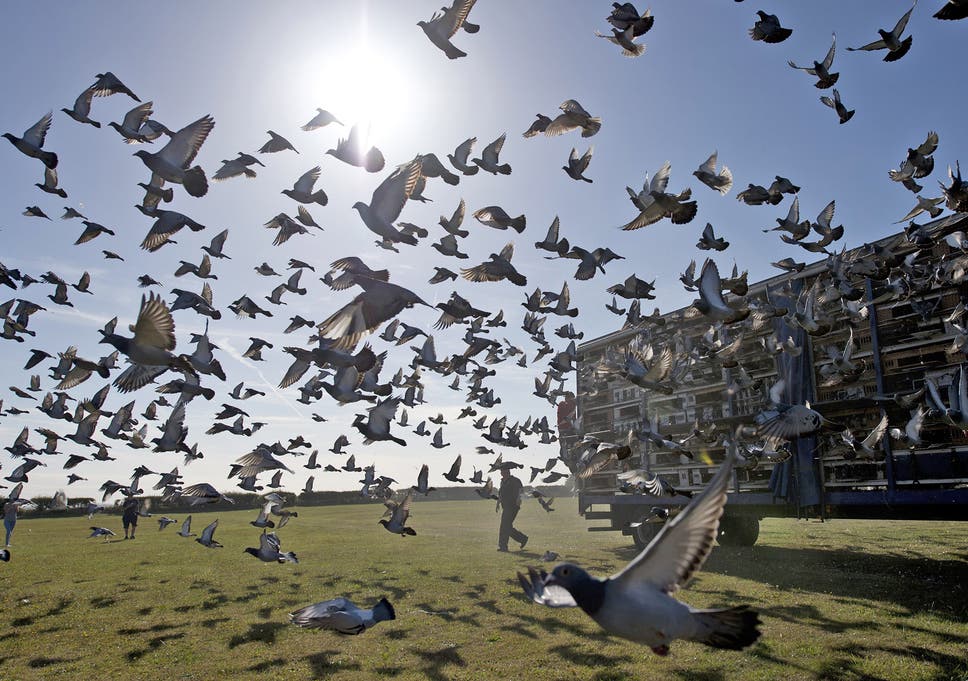
Much like betting on horses, there is a whole lot of money involved. In 2013, one racing pigeon born in Belgium was sold to a Chinese millionaire for 410,000 dollars. The price of a racing pigeon can depend on its bloodline, as well as origin. However there is no scientific way to tell if there is actually any real advantages to the pigeons marketed as better, so a lot of it is branding.
Like any sport where so much money is involved, someone is going to end up cheating. In August of 2018, the Shanghai Pigeon Race happened, and two professional pigeon racers attempted to cheat in order to win the 160,000 dollars as a prize. They got their four pigeons to fly to a meeting location not far from the starting point. Once they got them, they put their pigeons in milk cartons. Then, they got on one of China’s newest bullet trains and rode close to the end, where they then released their pigeons and had them fly to the end. However, they ended up getting caught and shortly after killed their pigeons to get rid of the evidence. They were both convicted of criminal fraud.
Pigeon racing, which has become the past time of China’s wealthiest, has resulted in the reputation and perception of them changing. An animal’s worth should not be determined by how it affects and interacts with humans, but now that pigeons have potential to make people money, they are given a whole lot more respect.
Pigeons are viewed in China the way horses are viewed in America. Horses in America are not inherently fancy and relatively common, but because horse racing is seen as high stakes and was a somewhat fancy activity, the animals themselves are seen as fancy too.
Nobles and the ruling class race pigeons, so pigeons themselves simply cannot be thought of as dirty and low class. Same with horses, although farm animals, they can’t be seen as that bad considering top race horses can go for tens of millions of dollars.
The way China views pigeons really shows that an animal perception in based greatly on cultural norms and not the animal itself. If the pigeon can be seen in such a positive way in China, what is stopping it from being seen like that in New York City?
The way pigeons are seen has an actual impact too, as it leads to people valuing their life less. If something is commonly seen as worthless enough, eventually its life won’t be valued, which leads to them being killed without thought often.
The United States Department of Agriculture kills 60,000 pigeons a year in response to complaints. That is 60,000 unnecessary deaths because humans are inconvenienced.
The negative perception of pigeons has always had actual consequences. Migratory Bird Treaty Act of 1918 left pigeons unprotected. Many other birds, less useful and unique, were included on this list. Sadly, pigeons were kept off of the list, which allowed for them to be ruthlessly hunted for sport, and killed casually, everyday, without repercussions.
The mindless killing of pigeons resulted in the extinction of the passenger pigeon. They were hunted for sport, and would be released from cages only to be then shot at for target progress. They could have even survived the commercial slaughter of them, but sadly many hunters and developers were also disrupting their nesting grounds and natural habitat. 2014 marked the 100th year anniversary of their extinction, an extinction caused by solely human interference. This is one less species we have on the earth due to the mindless behavior of people.
Although it appears that most people don’t show any emotion resembling caring towards pigeons, there are unique instances of compassionate New Yorkers trying to help them. Two years ago, New Yorkers brought 3,000 of them into the Wild Bird Fund. The Wild Bird Fund helps and rehabilitates injured birds. Most of the pigeons brought to them were either hit by either a bike or car, or they flew into a window. The workers at the Wild Bird Fund help feed and tend to the wounds of injured pigeons. It’s strange to think some people are working so hard to keep them alive, while others have zero concern over whether or not they live or die.
Despite being mistreated in New York City, pigeons have still managed to continue their mating patterns that have existed for hundred of years. Males pigeons in New York city pair with females for life and remain monogamous.
Courtship between them remains as elaborate as it was before they adapted to urban environment. Male pigeons will emit a loud booming call, then they bows their head, spread their wings while fanning their tale. Male pigeons will also dance with their wigs stretched upward. If they do this, the female will sometimes stretch up her wings and run around the male and circle him.
This ritual is one of the few things that connects all pigeons. No matter how far away the country they are in is, or how differently they are perceived, both are connected through this instinctual, extravagant ritual.
The same type of pigeon one would see in a New York City park does this ritual, as one in rural
China. The ideas and perception of these birds in both of these societies is unique to their culture, and the daily lives lived by these birds could not be more different. Millions of pigeons will always reside in these places, and so the unique relationship between humans and these animals will continue, whether people like it or not.
Pigeons for most people are just another thing they pass, and think nothing at all. No is saying they deserve or ever will receive the compassion we show for the animals in our homes. That is because we chose to domesticate those animals, and forced them to rely on us for food and shelter. However, pigeons too were forced by us to rely on us, yet unlike domesticated animals we don’t actively attempt to provide them with anything. So they should not be held accountable for their attempts to survive in an environment they aren’t even meant to live in.
They next time you are in a park or on the sidewalk and you see a flock of pigeons all fighting for crumbs or scraps just trying to survive, notice it.


